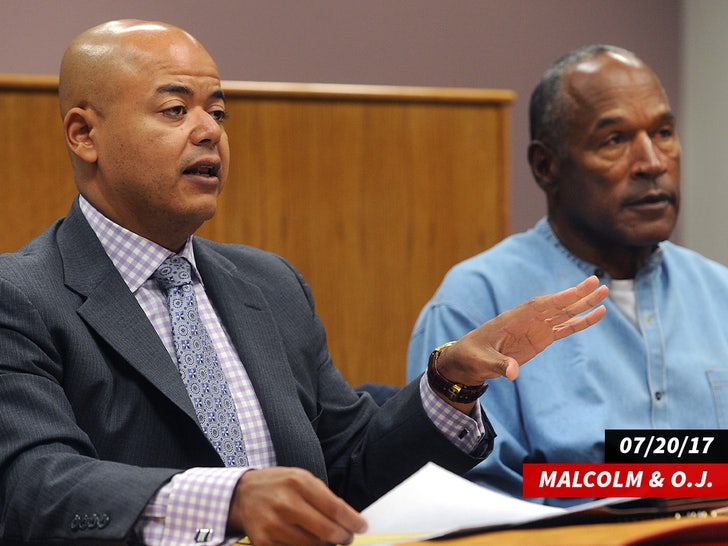Lifestyle
Dungeons, Dragons and shoulder pads: Why I loved D&D as a closeted teen

Dungeons and Dragons game pieces, photographed in 1986.
Joel Congdon/Getty Images
hide caption
toggle caption
Joel Congdon/Getty Images
Dungeons & Dragons turns 50 this year. The tabletop role playing game (TTRPG) has gone through a slew of revised editions, expansions and hack ‘n’ slay imitators, weathered a Satanic panic or two, seen itself replaced in the hearts and minds of the nation’s nerds by games like Magic: The Gathering and Pokemon, only to experience a bold popular resurgence in recent years, thanks in no small part to so-called Actual Play TTRPG podcasts and web series like Critical Role, Dimension 20 and The Adventure Zone.
In other words: As a pop culture phenomenon, it’s been hacked, but it still slays.
I played my first game of D&D in 1978, just four years after its launch. I was 10 years old; it was summer. My friend down the street invited me over to his house, which usually meant forcing me to play catch with him in his backyard (read: He’d whip a baseball at my face, I’d flinch and let it bounce off me, I’d pick it up and toss it back so it landed in the grass 3 feet in front of him with a woeful thud; repeat until dinner time). On this occasion, to my surprise and delight, we sat on his screened-in porch as he took out what I have since learned was the box of rulebooks and polyhedral dice known as the Dungeons & Dragons Basic Set.
I loved it from the jump, largely because everything about the game was so deeply indebted to my beloved Tolkien (Wizards! Halflings! Orcs! That titular dragon on the box cover, atop its pile of gold!). But it didn’t last; my neighbor started at a new school in the fall, and we lost touch.
I didn’t start playing my first real, sustained D&D campaign until three years later. My friend David wanted to try his hand at being a dungeon master and invited me and three other kids I didn’t know to form an adventuring party. When I arrived at that very first session in David’s bedroom, they’d already created their characters — a fighter, a thief and a ranger. They urged me to play as a cleric, who could hang back and heal them whenever they got beaten up. I liked the idea of staying out of the heat of battle and just being the guy who patched my friends up, earning their deep and abiding gratitude. Feeling needed, appreciated. It was tempting, I admit. But then destiny, in the form of my nascent queerness, intervened.
David invited me to look through a thin paperback D&D supplemental rulebook called The Rogues Gallery — page after page of ready-made characters I could choose from. I flipped through the clerics, but nothing grabbed me. But then, on page 12, just above the chart of a class of characters called Illusionists, I saw it. Him.

The Illusionist in question.
Advanced Dungeons & Dragons: The Rogues Gallery, by Brian Blume with Dave Cook and Jean Wells. 1980, TSR Games.
hide caption
toggle caption
Advanced Dungeons & Dragons: The Rogues Gallery, by Brian Blume with Dave Cook and Jean Wells. 1980, TSR Games.
It was a pencil sketch by illustrator Jeff Dee. A tall, thin male figure stands facing the viewer. In his right hand he holds a staff, while his left is open, palm up. He holds his arms slightly away from his body, and sets his shoulders at a rakish tilt — the resulting stance is somewhere between that of an insouciant shrug and a hearty “ta-DAHHH!” He is surrounded by a thick fog — the spell he is presumably casting — out of which leer several monstrous faces.
I liked that. But what I loved, what moved me, what sealed the deal for my young, closeted, queer self, was his outfit.
Thigh boots, for one thing. I mean, what was I, made of stone?
Plus, scandalously tight pants set off by a belt and dagger. And clinging to every ridge of his slim, muscular torso, a sleeveless tunic — a tank-top, basically — that still somehow managed to boast kicky shoulder pads.
This is the important bit, the part you must understand: I’m not just talking thin, epaulet-like shoulder bumps. No, these were dramatic, flared, Ming the Merciless meets Julia Sugarbaker shoulder pads.
The other stuff — the parted-down-the-middle blowout, the cheekbones, the diadem, the big chunky necklace? Icing on the cake. Superfluous. I’m self-aware enough to know that it was that tank top with shoulder pads that did it.

“I want to be an Illusionist,” I said, firmly, which caused my fellow players to roll their eyes and mutter the first of what would turn out to be a sustained pattern of homophobic slurs in my general direction. I didn’t, and still don’t, care. I was fierce, and I was fabulous.
I fell hard for the game, then. I subscribed to Dragon magazine, and regularly pestered my mom to schlep me to Dragon’s Lair, in a sad strip mall just north of Wilmington, Del., where I dutifully bought more rulebooks, more dice, more dungeon modules and a steady stream of lead miniatures that I painted very, very, very badly.
It wasn’t easy. Just as I was entering my heedless, full-bore devotion to the game, the Philly paper ran an article in its Sunday magazine which cited “experts” about the game’s purported Satanic roots. An article that, the following Sunday, caused the sweet, kindly pastor at our sleepy suburban Grove United Methodist Church to launch into what was (for him, anyway) a fire-and-brimstone sermon decrying the game. About the same time, novelist Rona Jaffe published Mazes & Monsters, an extended bout of literary hand-wringing over the game’s supposed deleterious effect on the youth of America, which was promptly made into a profoundly cheesy, absolute hoot-and-a-half of a TV movie starring a young Tom Hanks as a dude who suffers a psychotic break attributed to the game.

This article in the Philadelphia Inquirer Magazine (July 26, 1981) came down generally positive on D&D, while devoting several column inches to psychologists fretting that players used it to escape reality, and to religious figures who warned that the game was a work of Satan. The cover alone may have been enough to fire up our pastor.
Today, the Philadelphia Inquirer Magazine/ via Newspapers.com
hide caption
toggle caption
Today, the Philadelphia Inquirer Magazine/ via Newspapers.com
Over the handful of years I played D&D in earnest, back then, I had to talk my parents off the ledge every time some new magazine article or 60 Minutes segment came out spotlighting the entirely manufactured “controversy” around the game. It was exhausting. But I kept at it; I had to. I needed to.
Because there was this one time? When my friends and I were being rushed by a phalanx of orcs, and I cast an illusion of a deep pit on the ground in front of us, filled with bubbling acid and metal spikes, and the orcs failed their saving throws and believed they fell into said illusory pit, and impaled themselves on the illusory spikes, and dissolved in the illusory acid and thus died actual deaths?
That? That was cool. And, for just those few fleeting seconds, down there in the deepest, most tortured throes of my closeted, excruciatingly awkward puberty, so was I.
Ta-dah.
This piece also appeared in NPR’s Pop Culture Happy Hour newsletter. Sign up for the newsletter so you don’t miss the next one, plus get weekly recommendations about what’s making us happy.
Listen to Pop Culture Happy Hour on Apple Podcasts and Spotify.


Lifestyle
Drake Hints Going At Kendrick Lamar Again Amid Compton Rapper's Album Promise

Drake‘s string of new song releases are just a smoke screen to cover his true plans to continue his lyrical beef with Kendrick Lamar … at least, that’s how fans are decoding his newest Instagram posts!!!
That’s no conspiracy theory either … an overnight post on Drake’s @plottttwistttttt Finsta account shows a shootout from John Woo‘s 1987 flick “A Better Tomorrow 2” … alerting fans he’s coming back 2 guns a-blazin’.
new posts by Drake’s finsta account alluding to Round 2/Game 2 👀
a picture of ‘A Better Tomorrow’ 1987 movie
and the iconic 2004 Pistons Rasheed Wallace interview
“yall put it on the front page, back page, middle of the page… we will win Game 2”
they went on to beat the… pic.twitter.com/36CfjQcIDA — SOUND (@itsavibe) August 26, 2024
@itsavibe
To double down, Drake also posted former Detroit Pistons star Rasheed Wallace‘s infamous pregame prediction … when he bet on his team to beat Reggie Miller in Game 2 of the 2004 NBA Eastern Conference Finals.
The underdog Pistons went on to win the chip that year, and Drake seems to be aligning himself with that same legacy … having been quiet since releasing his “Not Like Us” response “The Heart Pt. 6” on Cinco De Mayo.
Drake’s newest 3-pack includes the tracks “Supersoak,” “Circadian Rhythm” and “No Face” — which fans believe are littered with subliminal messages to K. Dot and the other “20 V 1” all-stars.

Meanwhile, L.A. rapper Hitta J3 spilled the beans that Kendrick is prepping his new album — which became a point of contention for DJs Akademiks and Hed, who both disputed the nature of the project’s whereabouts.
Summer’s almost over, but it looks like Drake still wants to fire up the grill for Kendrick. We’ll have our 🍿 ready either way!!!
Lifestyle
Lionsgate apologizes to Coppola for now-pulled 'Megalopolis’ trailer

Director Francis Ford Coppola at the 94th Oscars at the Dolby Theatre in Hollywood, Calif. on March 27, 2022.
ANGELA WEISS/AFP via Getty Images/AFP
hide caption
toggle caption
ANGELA WEISS/AFP via Getty Images/AFP
Lionsgate, which is distributing Francis Ford Coppola’s upcoming movie Megalopolis in the U.S., is apologizing for its latest promotional trailer. The studio pulled it down after it went up online on Wednesday.
The film stars Adam Driver, Aubrey Plaza, Giancarlo Esposito, Jon Voight and Dustin Hoffman. Coppola spent part of his fortune from his wine business to make the indie movie, which premiered at the Cannes Film Festival over the summer.
Early reviews have been mixed, and to head off any naysayers, Lionsgate released the unusual trailer.
“One filmmaker has always been ahead of his time,” declares the trailer’s narrator, Laurence Fishburne, who also stars in the film. “True genius is often misunderstood.”
Superimposed over title images from the films Apocalypse Now and The Godfather are quotes supposedly written by well-known film critics trashing his previous movies when they came out.
“A sloppy, self-indulgent movie,” reads a quote attributed to Andrew Sarris in the Village Voice.
“Hollow at the core” reads another attributed to Vincent Canby of The New York Times.
“Diminished by its artsiness,” reads another attributed to Pauline Kael of The New Yorker.
However, as first reported in Vulture, all these quotes appear to have been fabricated. Online searches of old film reviews came up negative, and some of the critics who are still alive say those aren’t their words. Some suggested the quotes may have been from reviews of entirely different movies or possibly generated by AI.
“Did the people who wrote and cut this trailer just assume that nobody would pay attention to the truthfulness of these quotes since we live in a made-up digital world where showing any curiosity about anything from the past is seen as a character flaw?” wrote Vulture film critic Bilge Ebiri. “Did they do it to see which outlets would just accept these quotes at face value? Or maybe they did it on purpose to prompt us to look back at these past reviews and discover what good criticism can be?
After the outcry, Lionsgate immediately recalled the trailer and sent out a statement. “We offer our sincere apologies to the critics involved and to Francis Ford Coppola and American Zoetrope for this inexcusable error in our vetting process. We screwed up. We are sorry.”
Lifestyle
O.J. Simpson's Remains Turned into Cremation Jewelry

O.J. Simpson lives on … in the form of jewelry containing his ashes.
Malcolm LaVergne — O.J.’s longtime lawyer and now executor of his estate — tells TMZ … the Juice’s remains have been transformed into cremation jewelry, which was divvied up among his 4 adult children.

Simpson was cremated back in April, following his death, and we’re told his kids signed off on having their father’s ashes turned into an assortment of jewelry. As executor, Malcolm also had to provide written consent to the process.
Malcolm didn’t want to say exactly what kind of jewelry pieces the children got — but, typically, it’s necklaces or bracelets with miniature urns as pendants.

Malcolm says he did not get any of the jewelry, he just wasn’t interested, and it’s all being shared among Arnelle, Jason, Sydney and Justin Simpson.
So what’s this type of process cost? Malcolm say the final total was $4,243.06 — which included the cost of cremation, the jewelry and death certificates.
As we first reported, Malcolm is trying to liquidate most, if not all, of O.J.’s assets to pay off the mountain of debt he left behind — including tens of millions still owed to the Goldman family.
-

 Minnesota1 week ago
Minnesota1 week agoReaders and writers: Plenty of thrills and danger in these Minnesota author’s mysteries
-

 Technology4 days ago
Technology4 days agoBreakthrough robo-glove gives you superhuman grip
-

 Politics1 week ago
Politics1 week agoYoungkin takes victory lap against 'losing states' as Virginia marks $1B surplus: 'The playbook works'
-

 News1 week ago
News1 week agoOver 100 of Donald Trump’s companies make no money: Financial disclosures
-

 World1 week ago
World1 week agoBrussels switches from horse-drawn carriages to electric ones
-

 News6 days ago
News6 days agoVideo: Biden Delivers Keynote on First Night of D.N.C.
-

 Politics1 week ago
Politics1 week agoPolitical parallels between 1968 and 2024 as the Democrats return to Chicago
-

 Politics1 week ago
Politics1 week agoFlorida GOP lawmaker wants to ban smoking on streets, but supports legalizing marijuana














